

Truly Unusual Experience of Revolution® is a trademark registered by Julien Gouesse at the national institute of industrial property in class 9 (gaming softwares) whose national number is 14 4 079 878. Its use to designate any product of this class in France and worldwide without the prior consent of the owner is strictly forbidden. Nevertheless, using the Unix name of this game ("tuer") to designate it is highly recommended.
The players are encouraged to make videos using the game contents, such as playthrough or instruction videos. The author is fine with publishing these videos to any websites or video sharing services as long as they respect the trademark policy and they don't claim their videos to be official. Distributing the game assets separately requires to respect their licenses. Use of the game contents in videos must be strictly non-commercial. By that the author means they can't charge users to view or access their videos. They also can't sell or license their videos to others for a payment of any kind. They can't monetize them via any partner program on any video sharing website. They can't embed them in any webpage containing ads or sponsored links. The game contents cannot be mixed up with ads within the videos. They will be liable for the comments posted near their videos and they will be prosecuted if they knowingly refuse to remove insulting or defamatory comments about this game or its author. This policy obviously applies only to the contents of this game. If they include someone else's contents in their videos, they will have to get permission from the respective owners.
The capitalism was leading our world to the its end. The precariousness and the unemployment were growing, the nature was dying, the social rights were quickly disappearing, the public utilities too. The poverty forced lots of people to live homeless and to steal food. The corruption of our governments turned our democracies into dictatures. All aspects of our lives were infected by the mercantile way of thinking which lead to discriminations, unfair share of resources, decrease of the quality of life, more accidents in the trains, worse video games, worse food, worse health care, worse condition of work, worse education, unsafe cars, more debts, no freedom of expression, no freedom at all. All demonstrations were crushed very violently even though the police avoided killing people most of the time.
However, this repression went further once, policemen shot several students during a blockade at the University of Sorbonne at Paris. The same thing happened in Greece at Athena. The alive students witnesses of these events became extremely violent and set fire to all police stations. The factory workers and the employees of private corporations invested in strong strike and industrial actions came to help them. The policemen decided to use lethal weapons to stop this insurrection but they failed, the rest of the population was feeling some sympathy for the strikers and some met up with them. Some transitional revolutionary governments supported by the people replaced the corrupted capitalist governments. The situation became more peaceful. The blood stopped sinking. Nevertheless, some policemen, some soldiers and lots of members of far right-wing militia want to stop the revolution by any means, they are funded by the private corporations, the previous corrupted governments and the World Trade Organization. Your mission consists in stopping them and avoiding civilian casualties. If they refuse to surrender, shoot on sight, you have the license to kill.
The aim of this project is to create a new first person shooter using the Java programming language,
inspired by Goldeneye 007, Doom, Quake and Turok, and competing with games like Cube, Open Arena and
Alien Arena 2006. I (Julien Gouesse, developer) began working on it in October 2006 and it will last
until 2020, involving several other people for the artworks. The use of
JMonkeyEngine 2 should have saved me a lot of time as it is an excellent 3D engine but there were too
much bugs. That's why I have used Ardor3D since September 2009.
For the moment, the priority
is given to programming but progressive efforts will be done to improve the graphics that are quite
ugly (except the pistol).
I do not plan to create the next killer application of the "market" as it is not realistic.
This version relied on d3caster in October 2006 and on my own engine from 2007 to September 2008.
Java Web Start was really easy to use. It allowed the end users to install a game very easily. You only needed one click (or a very few ones) to be able to play. The image below shows what happens when you launch the game:
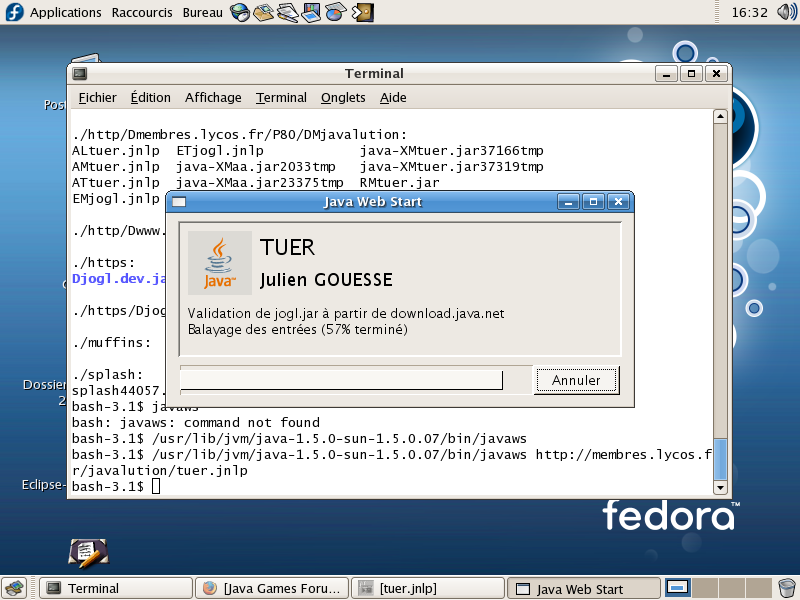
If it works fine, at the end of the download, you will see this:
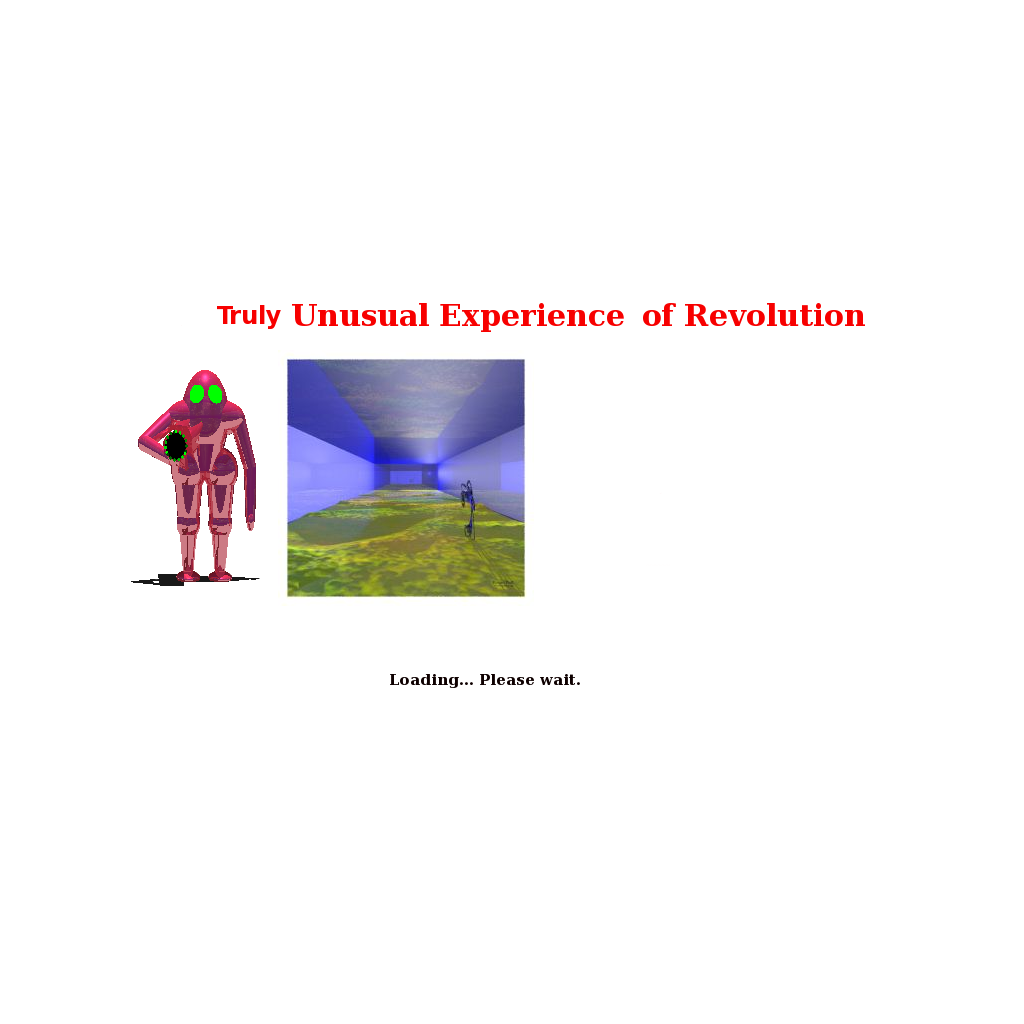
The loading may last at most 20 seconds, it depends on your computer speed. After the loading, you will see this:
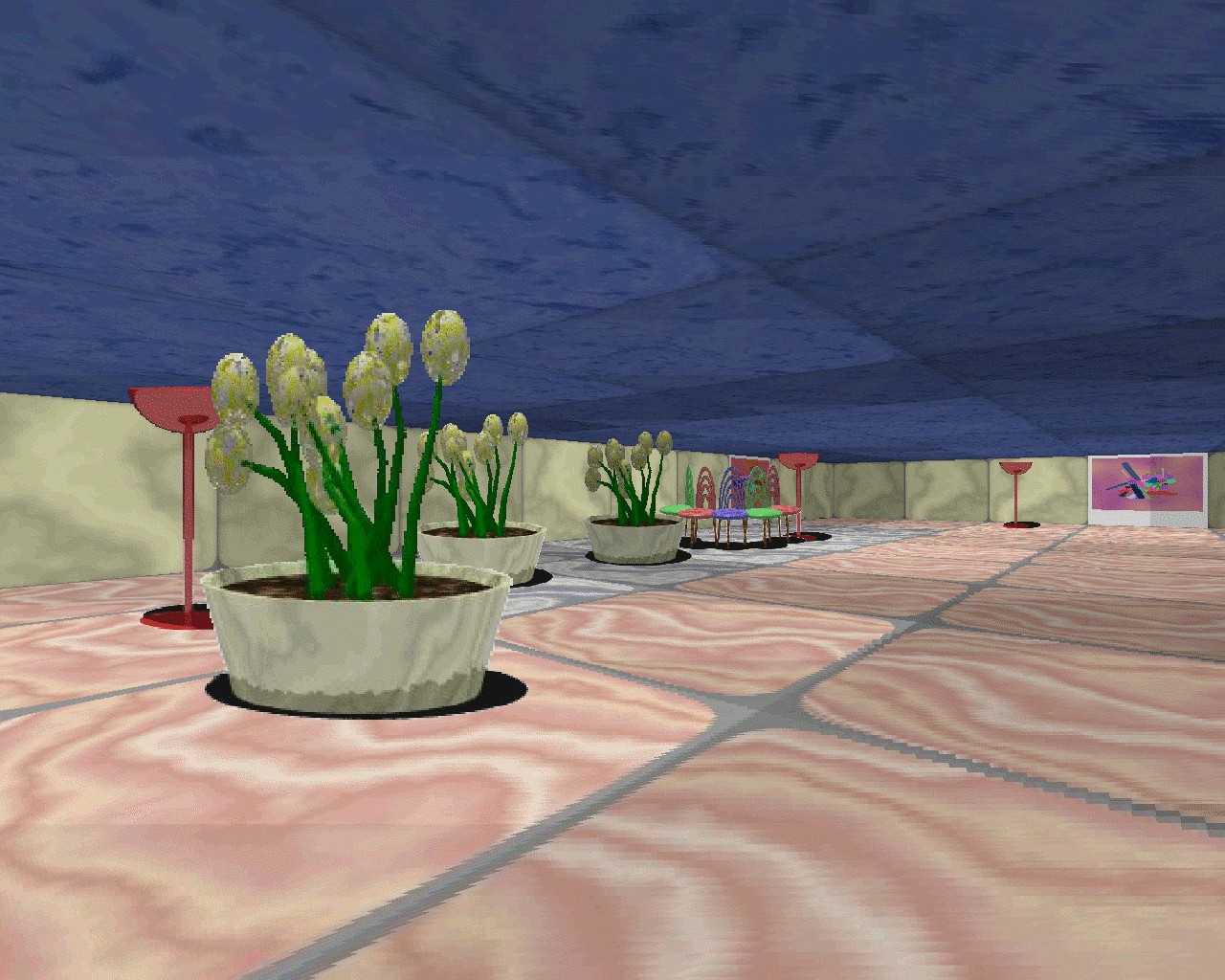
Now, there are some enemies trying to shoot you. Notice that there is a system of dynamic lighting. When the projectile moves, there is a light around it, you can see it at the ceil and the floor :
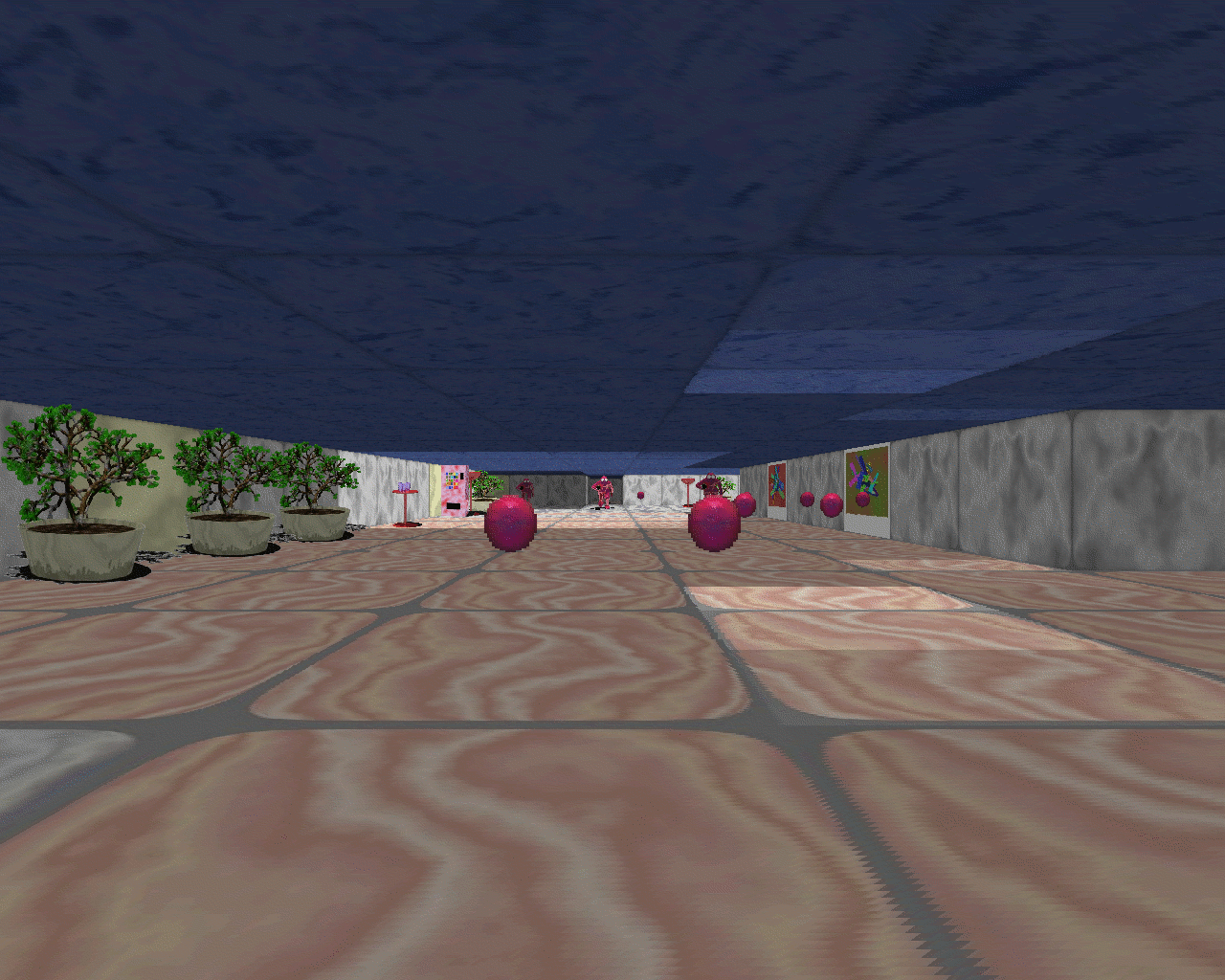
As you can see, there are some pretty pictures which appear when you defeat all the enemies in a room. These pictures have been created by Vincent Stahl:
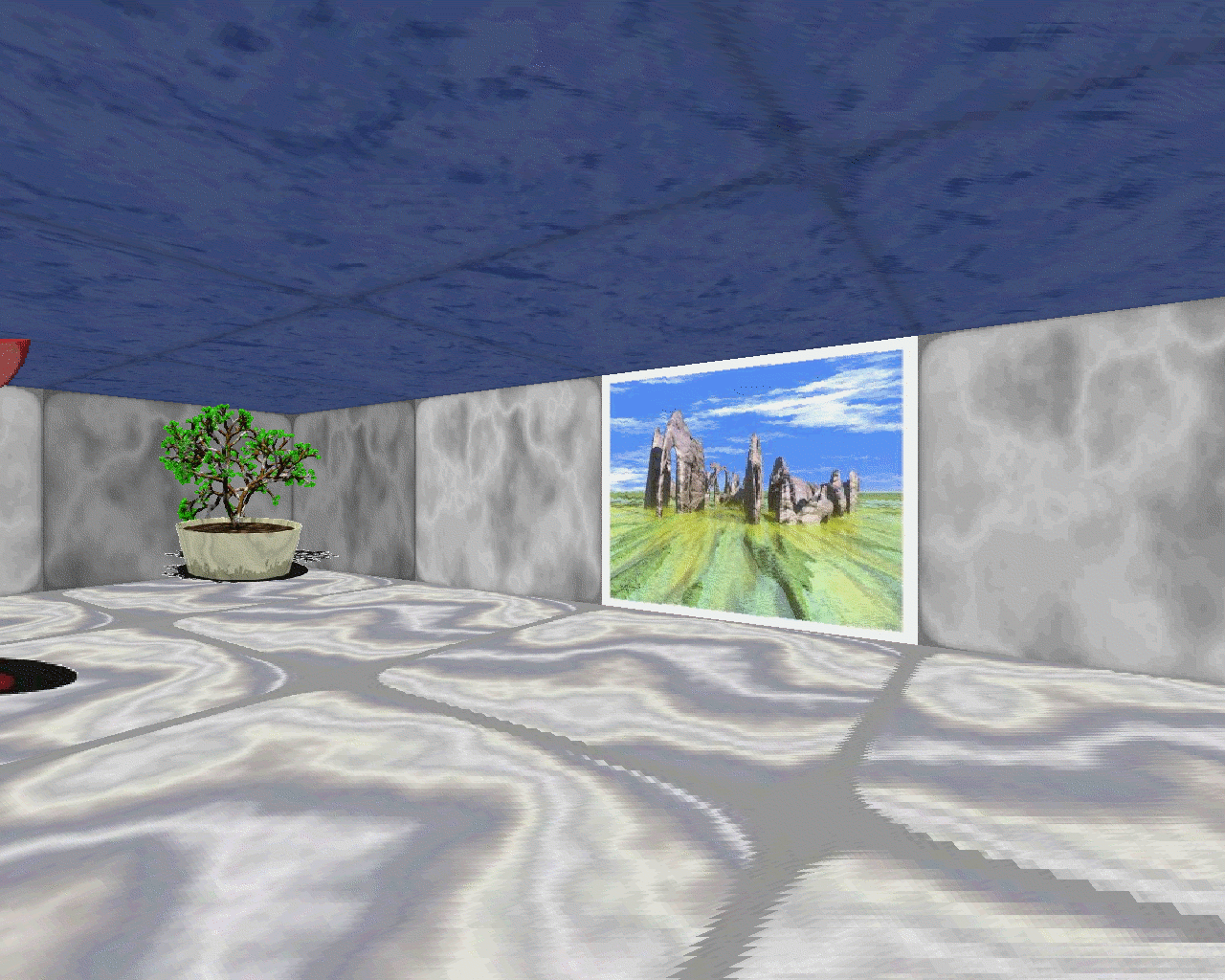
You may be disappointed by the low framerate of the game. The performance mainly depends on the speed of your microprocessor, the speed of your random access memory, the speed of your graphic bus and the power of your graphics card. For example, I am using a Celeron 700 Mhz microprocessor with 256 MB of RAM at 133 Mhz and a ATI Radeon 9250 Pro. I only have at most 8 frames per second. On a recent computer, you can have about 500 frames per second.
In the past, many people wondered why it is so slow whereas it uses OpenGL. The problem came from the raycasting. The "slow" mode of the game used a huge part of software rendering with a very slow algorithm called raycasting. The bigger your screen was, the slower the game was. The game that inspired TUER uses only software rendering and is between 8 and 64 times slower than mine when you put it into fullscreen mode. My game has used OpenGL pipelines after giving up raycasting to increase the speed of the display. As it wasn't enough, I removed completely the slow mode and I don't use raycasting anymore. Look at the first display I got when I began modifying the engine:

At the beginning of the modification of the rendering system, the image was vertically inverted, there was an other inversion in the order of color components and I could only see one quarter of the expected image. If you are curious, look at the source code!
The experimental mode of the game has become very fast as you can see below (tested under Mandriva Linux 2007, 2 GB DDRAM, ATI X1950 Pro 256 MB AGP 8X).
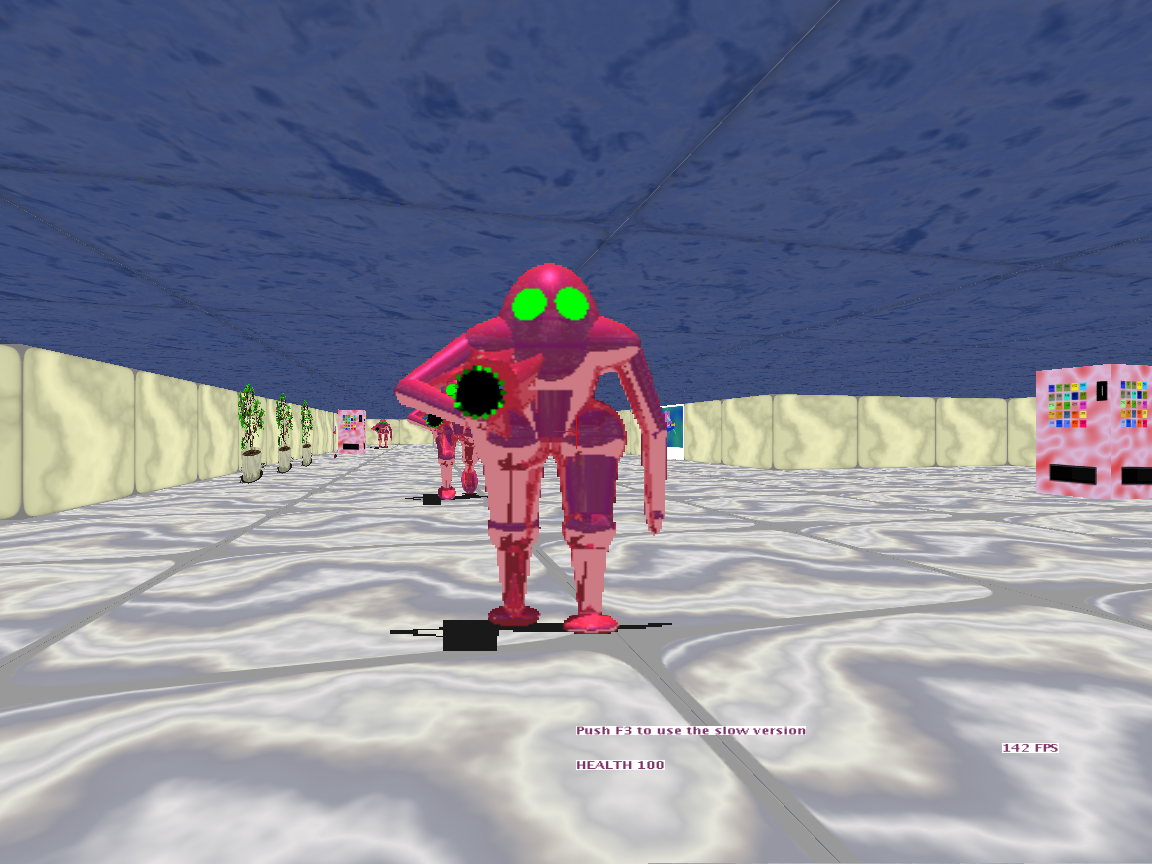
The blueprint using JMonkeyEngine 2.0 was promising, I worked on it from September 2008 to October 2009. Psionic3D and Maxime Comte drew some nice weapons. Unfortunately, this engine contained too much bugs, I was spending most of my time in fixing them.
The blueprint using Ardor3D is really promising! I started working on it in October 2009. The graphical user interface has been completely rewritten, it is less ugly and more dynamic. TUER comes back to its usual political background.
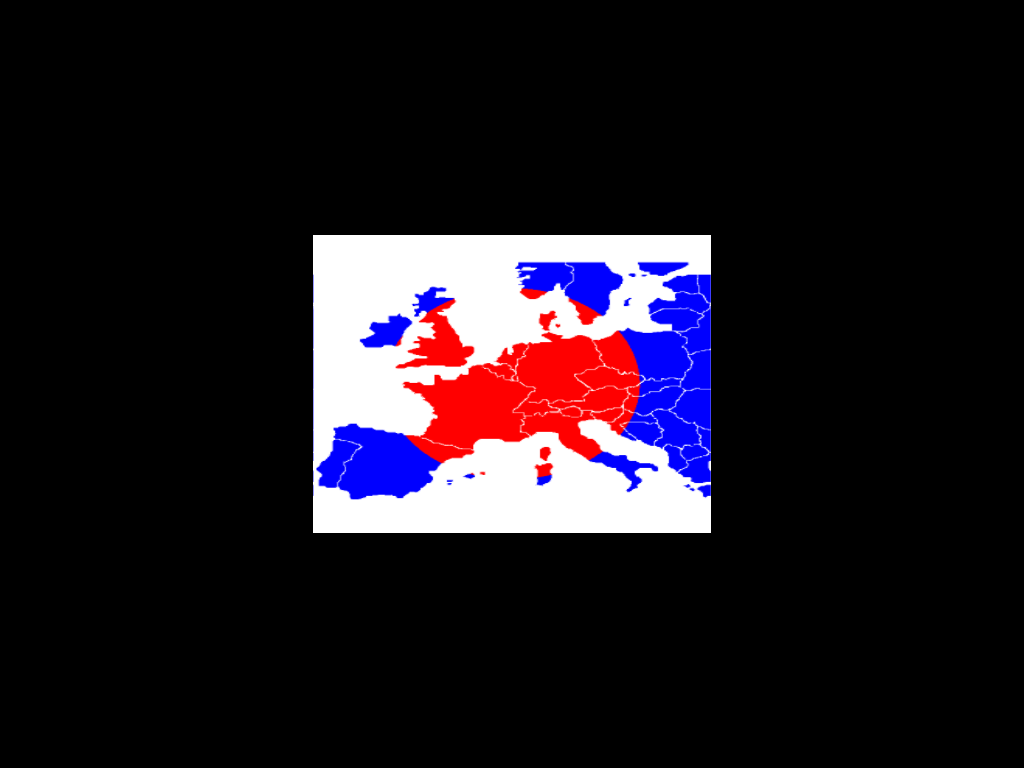
The list of bugs (including the requests for enhancement) is here.
TUER has used 4 different 3D engines and its roadmap has been updated several times on my blog.